
© Graham Wylie. (Click image for larger version)
“The Festival is very much about challenging yourself and the audience…
…and today we’ve danced 5 world premieres!”
That was Christopher Hampson speaking on the first day of the unique Scottish Ballet-led 4-day Dance Odysseys programme at the Edinburgh International Festival, a programme featuring 19 dance works spread over 8 shows, not to mention 8 talks and discussions and 4 rare film screenings. Much was made of the joint Scottish approach with Fleur Darkin’s Scottish Dance Theatre (SDT), and of the 19 works, 2 were by SDT. Additionally company Gelabert Azzopardi Companyia de Dansa also presented a piece – the final event of Dance Odysseys and suggested by Jonathan Mills, the Festival director.
The approach was not ballet-led but dance-, dancers- and choreographer-led with an emphasis on later 20th and 21st century chamber works. It was very much a celebration of the new and the best rather than a celebration of pointe-based tradition and tutus.
Dance Odysseys took place in the comfortable Festival Theatre, though for many shows it was converted into a more intimate space by constructing studio theatre seating at the back of the existing stage. The result was dancers having a normal-sized stage but the audience much closer to the action and with fabulous sight-lines. Other performances were given in the glass-fronted theatre foyer with the audience sitting around on the stairs and carpeted floor. There were also some very bamboozled passers by stopping to have a good gander from across the road. A space was also constructed for the various talks and discussions which were also ticketed and well attended. Only the 4 headline 8PM performances used the theatre as normal, but abnormally we generally just saw 30-40 minutes of dance. Hampson talked about wanting to show chamber works alone rather than in the ‘forced’ context of a triple bill with short intervals. I’m not so fussed myself, but I did like the overall setup where you could dip in and out of the events as *you* wanted, and there was enormous serendipity in that for festival revellers.
Prime Links
www.eif.co.uk, scottishballet.co.uk, www.scottishdancetheatre.com, gelabertazzopardi.com, jamescousinscompany.com, rosiekay.co.uk
Many pro writers were there at various times, including some up from London, but, with the exception of the delightful Mary Brennan, I wasn’t aware of anybody else looking to cover it all. Brennan actually chaired some of the discussions and seemed to be at the others – happily contributing interesting questions to draw this or that out. Although I record my own thoughts here I also link out to some of those wider reviews – enjoy the agreements and contradictions! I nominally cover the live shows in the performance order I saw them in – interesting things that arose from the talks and discussions I include in with those views, and the film screenings ditto.
So here is what happened in my own 4-day Dance Odyssey…
Day 1
Day 1 (16 August 2013) started at 4AM, for a 06:50 flight to Edinburgh. At 10:00 I was picking up my tickets from the Edinburgh Festival Hub, recharging with coffee while checking them all and thinking I must be mad. At 11:00 I was checking into the B&B (Alba Hills, best value I’ve ever used in Edinburgh: www.albahillsedinburgh.com) and at 11:45 I said “Well hi there!” to the Scottish Ballet director and at 12:00 sharp the first show started…
New Voices bill
The New Voices bill came from a mix of choreographers, some better known to dance regulars than the ‘new’ tag might suggest. The show opened with James Cousins, winner of Matthew Bourne’s New Adventures Choreographer Award and making a splash at Edinburgh with 2 pieces for Scottish Ballet and one on the Fringe (more of which later). I’ve been tracking him since I first saw his work in The Print Room at Notting Hill – a contemporary choreographer, but he seems to shun the grunge, twitch and thrash of so many others. His Still it Remains was a world premiere (like all the other pieces on the bill) and a classy bit of work for a female quartet. The music, by Kronos Quartet (listen to it all on YouTube), was originally composed by Azeri accordionist Rahman Asadollahi, and Cousins is at one with its Middle Eastern sense of melancholy and deep, time-honoured tradition. The kneeling dancers act as one, ritually casting their arms as if wailing in despair at life, and while choreographic phrases repeat they slip out of sync with first one, then others, standing up and starting to tentatively explore a bigger world, only to return to the floor and the original motifs of despair and tradition. It rather reminded me of Christopher Bruce and his community pieces: wonderful music amplified by the dance that stretches dancers and talks to me about the different lot of women in parts of the world.
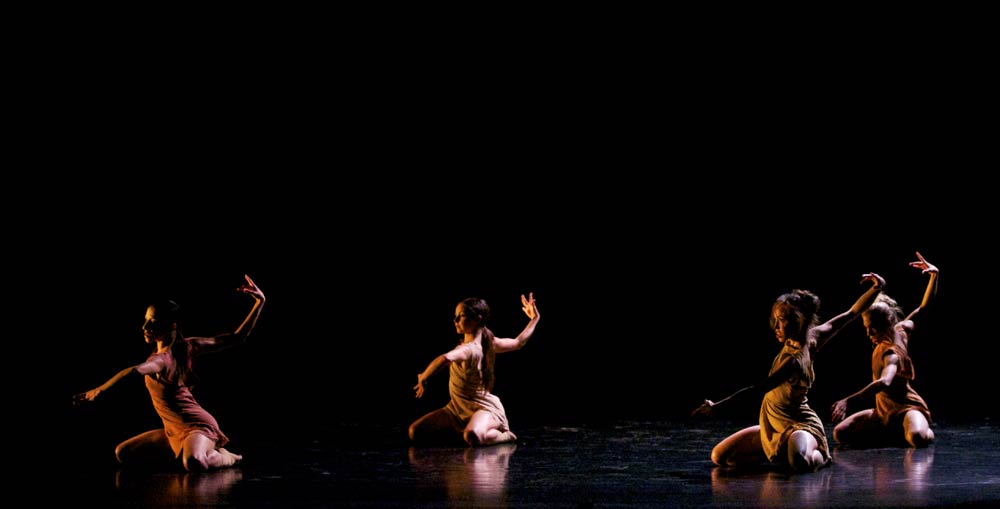
© Andrew Ross. (Click image for larger version)
US-based Helen Pickett is little known in the UK and won me over with her The Room in the first minute – probably one of the most intriguing dramatic starts to a piece I’ve seen in years and it really drew me in. The walls of the room are defined by light on the stage floor and the only furniture a contemporary sofa. Inspired by Jean-Paul Sartre’s No Exit (Wikipedia link) it starts with a turquoise-suited man and a demon/valet character, there to drive the action forward. After a short while a woman in red walks in, (‘wife or lover’ you think), and the valet disappears for a while, returning with a second woman in green, (‘lover or wife’ you think), perfunctorily carried in as if a rolled-up rug. Four disparate and unhappy characters assembled to the majestic strains of Max Bruch’s Violin Concerto No 1 (listen on YouTube). My goodness – she’s thought about this and how to grab the audience, I thought. Pickett’s pointe-based movement is angular, jerky and theatrical. Nobody ends happy as they shed their clothes, as if trying to find self-truth, and come together in abandoned, spirited duets. It ends after 8 minutes with a climax of movement as if the room is set to explode with unhappiness – and the lights go out. You are desperate to know what happens, to know the proper backstory and for there to be lots more acts. I gather the piece is going to be extended for Atlanta Ballet – lucky them. And I hope lucky us at some point as somebody hires Pickett to do a much longer piece. I love her sense of theatricality and think it would run well with our love of drama and dance.
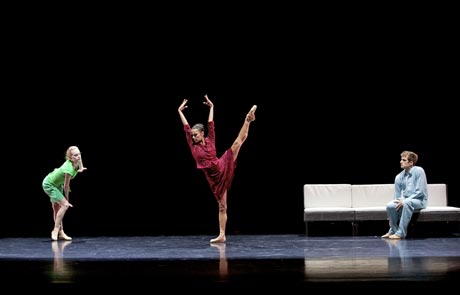
© Andrew Ross. (Click image for larger version)
It would be nice to say that Henri Oguike‘s contribution, commissioned by Scottish Dance Theatre and using 3 of their dancers, maintained the high for me, but it didn’t, sadly. As music In this Storm uses Aleksandra Vrebalov’s … hold me, neighbor, in this storm… (although not stated, played by Kronos again, who commissioned it – YouTube link to music) and inspired by diverse cultures in the Balkans. Sparing me, the NY Times said of the musical premiere: “Recordings of church bells and Islamic calls to prayer were woven into a vibrant tapestry of urgent, sinister passages with insistent rhythms, lyrical interludes, raucous folk melodies and microtonal whispers. Unusual sonorities, like an emotive viola melody over a muezzin’s call, and the use of a gusle (a bowed string instrument) and a tapan (a large double-headed drum) added further local flavor.”
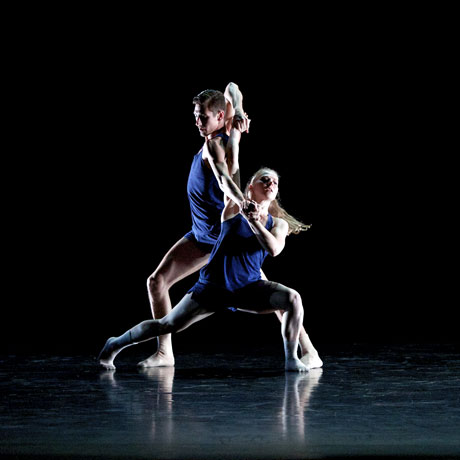
© Laura Mumby. (Click image for larger version)
It’s a bold choice of music and if its inspiration was also inspiration for the piece I know not (the EIF programme was rather lacking). What I saw were 3 dancers dressed in a bold blue, as if for football or the gym, and powerful, effortful, movement with a strong pulse running through it and the odd pelvic exercise. Beefy, unrefined, earthy movement abounds and you see fragments of stories between Natalie Trewinnard and her two male colleagues, but it seemed to go on too long and I didn’t relate closely to it as movement or possibly drama. Besides the score my overwhelming impression was of powerful dancers and I wished I’d seen them in something else.

© Andrew Ross. (Click image for larger version)
Things picked up with Dark Full Ride by Martin Lawrance who had worked with Scottish Ballet last year on their much-admired contribution (Run For It) to the Dance GB tour. The Dark Full Ride title comes from Julia Wolfe’s score of the same name (listen on YouTube) and was a terrific palate-cleanser of pure dance. Of Wolfe Wikipedia starts: “Her music is distinguished by an intense physicality and a relentless power that pushes performers to extremes and demands attention from the audience.” and that crystallised out to 4 drummers/percussionists going for it with fast, complex, often overlapping rhythms. Musically unknown to many of us, I’m sure, it starts surprisingly and explosively and Lawrance’s response is fast, energetic, loose-hipped and almost abandoned movement, if always on a beat. It feels fun, too, as Lawrance has his 2 couples with their backs to us for the first few minutes and wearing t-shirts with faces on (the back) so we don’t get too disorientated! It was his response in part to seeing the stage reversed to create the studio theatre environment. A good response and interesting for us to see bodies in such a different way.
As billed, this was the last piece and I think many were impressed if not a little exhausted by some intense work. But there was more…
As we got up to leave an announcement was made about the performance continuing outside in the foyer – a little surprise for us – in this case Kristen McNally‘s Foibles. For those who have seen McNally’s work in the small spaces at the Royal Opera House this was typical of her maverick, surreal approach, with references to spaghetti westerns, pop videos, children’s TV, Strictly and goodness knows what else flashing by in a blur. Foibles was fun but not the piece that was planned and first made – that was sadly poleaxed by what seemed unnecessary musical rights issues created by an uninvolved choreographer. A poor show, and I feel for McNally. But hats off to her for delivering quirky success on 7 of Scottish Ballet’s best. I particularly noticed Brenda Lee Grech and Luke Ahmet in a short playful duet – grown-up even.

© Andrew Ross. (Click image for larger version)
Later there was a discussion with some of the New Voices choreographers, if sadly neither Cousins or McNally could be there. Chaired by Dance Base’s Morag Deyes, Hampson was there, looking as happy as anything about how well it had gone. I found the session most interesting when the choreographers were asked about what they wanted to put over to the audience. It was clear that Helen Pickett thinks much about the audience and underlined the importance of story and breaking through the 4th wall and people’s ‘skin listening’ – a physical reaction. She talks interestingly and I looked forward to seeing her second piece in another bill. I’ve never heard Martin Lawrance say much and he was delightfully uncomplicated and very complimentary about the dancers, as was Pickett. Lawrance had set himself the challenge of seeing just how long he could sustain his dance before the dancers inevitably had to turn around and face us – 10 minutes in the end. For Henri Oguike it was about the music and it was not always clear how it would unfold. Earlier he’d spoken about his approach to creation where he has a movement system, works with all the dancers in a company before selecting ones with dance AND emotional intelligence and they set off together. And if creation needs a kick he will deliberately provoke dancers to get a response. Oguike is highly respected as a choreographer (indeed I’ve often enjoyed seeing his company – now sadly wound up) but I couldn’t help but compare the relative ease (or not) with which the three talked about their work with the enjoyment (or not) I derived from seeing their respective pieces.
All up, this bill was a good dose of the new and ultimately my favourite of all the bills.
Artists Links
jamescousinscompany.com, helenpickett.com, henrioguike.com, Martin Lawrance at RADC, Kristen McNally at ROH, scottishballet.co.uk, www.scottishdancetheatre.com
Review Links
Mary Brennan, Herald, Kelly Apter, Scotsman, Judith Mackrell, Guardian, Thom Dibdin, Stage, Zoe Anderson, Independent, Gerald Dowler, FT, Donald Hutera, Times, Lucy Ribchester, The List
Contemporary Classics
More contemporary work, but this time by choreographic big hitters, or game changers. And the chamber-works aspect permeating the 4 days meant that these were not generally often seen or well known-pieces in the UK.

© Andrew Ross. (Click image for larger version)
Christopher Bruce‘s Shift was the most recent work, only created for Ballet Central in 2007. It’s set in the 1940/50’s, when work was physical, and shows 6 dancers doing their shift of work and then their time off. I’ve always liked Bruce for his picking up on the ordinary Joes of life and how communities coalesce. In a later talk Christopher Hampson referred to him as “…so British – a choreographing Alan Bennett.” – spot on. Shift is not Bruce’s greatest work, it’s only 10 minutes for a start, but it neatly draws you in and shows the man’s communicative style. I also like that Bruce, for many the definitive Pierrot Lunaire (presented the following night), has been around the company in person handing on his knowledge at such an important and busy time.
Jiri Kylian was also seen handing on his skills, but via film, in a separate and earlier screening of Forgotten Memories. He narrates for the most part, introducing the film by saying he’s 63 and sharing his experiences… and it’s for viewers to accept, absorb, or throw away his thoughts.
It’s an interesting film, full of juicy observations on music and dance. He is often asked why he does so many duets and says the answer is simple – it’s about what is deep inside you; there is no such thing as abstract dance. Less successful are the long tracking shots of him cycling along a canal towpath and more annoyingly that nothing is titled – so you don’t necessarily know what he is working on in the studio or the clip that is being danced. They are all listed in the closing credits but not ideal, I think. But what I valued most in this was seeing a great choreographer in the studio, sharpening dancers in his works – the way he looks to exaggerate their first attempts and as he instructs them you hear him make odd sounds describing the nature of the movement he is after. They try again and inevitably it looks much better.
He is very theatrical – noting his mother was the Czech Shirley Temple – and you see it in all his work. But he takes the art of doing it all very seriously – at one point saying that “Humour is a serious business” while the pastry cooks do their wild thing on screen.
Mozart: Birthday – Nederlands Dans Theater celebrates Jiri Kylian
He ends with: “Sharing and love are the eternal themes of all I have done…”. All up, I was glad I saw this before seeing his 2 pieces in the contemporary bill. (Review of the film in the Herald Tribune)
The first Kylian in the bill was a screening of the film Silent Cries, starring his partner and muse, Sabine Kupferberg, dancing to Debussy’s Afternoon of a Faun. It’s nothing like the Faun of tradition but just as extraordinary. It places Kupferberg behind a 5ft-wide glass screen that effectively becomes her world. It’s dirty and at the bottom is an arrangement of foliage: she peers out at us, trapped by glass, camera and herself. She constantly looks to escape but can’t – at least until the end when she soars around the stage only to return to the screen she knows. At 12 minutes it’s a strong calling card for both Kupferberg and Kylian. (Review of film from 1987 in NY Times)
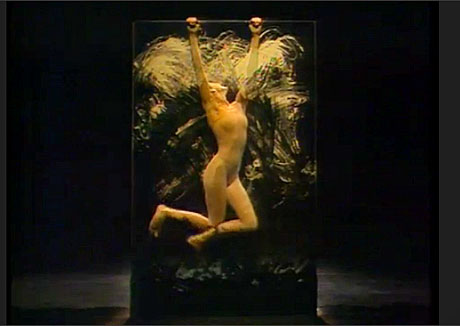
While Silent Cries is anything but chic and sexy, 14’20” most definitely is. Danced confidently by Brenda Lee Grech and Victor Zarallo, this is effectively the duet from the longer piece 27’52” and is rather perplexing in being anything but your standard duet of love/sex/argument. The score is electronic, the movement (from 2002) is urban and twitchy; she speaks German and the boy French, (Men are from Mars, Women are from Venus overtones?), she is inhibited, becomes free (and topless) and then they both die under the stage lino. It’s mysterious, particularly in that while it looks sexy, it’s incredibly sexless, with no love or lust. Not an easy thing to do in dance.
Video of Jiri Kylian’s 14’20” – the duet from the longer 27’52”.
Twyla Tharp‘s The Fugue dates from 1970 and an era that questioned what dance was – it was premiered only 3 months after Trisha Brown’s Man Walking Down the Side of a Building (if you’ve never seen or heard of it then the clue is in the title). Tharp appeared in the premiere and, as Jane Pritchard (Curator of Dance at the V&A) said in a subsequent talk, it was really the piece that announced Tharp had arrived. For 3 dancers and a mic’d stage – there is no music – it rather looks like it’s improvised, but it’s not and must be incredibly hard for the dancers to count. You get the odd shout but overall it’s the sound of hard shoes on stage and a little like tap in feel. But I didn’t warm to its endless ‘clever’ plays of repetition, though I did like the ‘mad-hopping’ phase.

© Andrew Ross. (Click image for larger version)
Brief excerpt from Twyla Tharp’s The Fugue.
Annoyingly I missed the other Tharp piece that was performed – The One Hundreds. Like Foibles it was not listed along with other works and not included in any of the shows I saw or was booked into. Also from 1970, it’s about as far away from the austerity of The Fugue as you can get as 100 performers, mostly non-dancers, perform quirky moves – this video says it all…

© Jacob’s Pillow Dance Festival Inc.
Artists Links
jirikylian.com, sabine-kupferberg.eu, twylatharp.org, wikipedia on Christopher Bruce, scottishballet.co.uk
Review Links
Mary Brennan, Herald, Kelly Apter, Scotsman, Judith Mackrell, Guardian, Donald Hutera, Times, Lucy Ribchester, Vivien Devlin, Edinburgh Guide
Sea of Troubles / Silhouette
Planning for Dance Odysseys had been going on for 1½ years but you can’t plan for all the flesh-and-blood realities of life. The choreographer Edouard Lock (Artistic Director of Canadian company La La La Human Steps) was commissioned to do a brand-new work on Scottish Ballet as the first headline EIF main stage performance. But with weeks to go family illness led to cancellation of the performance. At such short notice it’s impossible to commission new work and normally you’d fall back on some bit of established company repertoire. In the end Hampson did better than that – putting on a rarely-seen piece of Kenneth MacMillan and presenting a UK premiere of his own ballet Silhouette. Still a special and different night, then.

© Andy Ross. (Click image for larger version)
As it turns out MacMillan’s Sea of Troubles, based on Hamlet, was not new to Scottish Ballet, the company having danced it 20 years ago, and it’s a work that certainly fits small companies. It was originally commissioned by Dance Advance, a small Royal Ballet breakaway group. There was a fascinating after-show talk with Deborah MacMillan who cast more light on the background. As she put it, 6 dancers were rather fed up with the standard Royal Ballet repertoire and wanted to do new and challenging work. “Kenneth was interested in dancers showing initiative.” said MacMillan and he immediately agreed to do a piece for them (as a gift) with Deborah MacMillan doing designs which included bits of her mother’s fur coat – there wasn’t a lot of money for costuming!

© Andy Ross. (Click image for larger version)
Sea of Troubles is so not really my type of work – super-intelligent and fractured story-telling. Normally we associate Kenneth MacMillan with clever story-telling and immaculately-conceived movement that usually lays bare a plot to everybody – from dance newbie to diehard fan. It’s one of the prime reasons his blockbusters are in the repertoire of so many great companies. But here he turned his back on all that, and seemed driven by a mantra of “Well dancers… you said you wanted challenging and intelligent…”. Barefoot, episodic, the line of the story is often broken and roles are confusingly interchangeable – “Kenneth was trying to get into Hamlet’s head – all the pain of him” noted Deborah MacMillan. To stand a chance you really need to know your Hamlet inside out and after a few minutes I gave up and grumpily wrote in my notebook “Hope the programme covers it”. Sadly it didn’t. Even the movement seemed obtuse – all rather a disappointment for somebody who loves MacMillan’s work.

© Andy Ross. (Click image for larger version)
Anna Kisselgoff, in the New York Times, reviewed Sea of Troubles in 2003 when Adam Cooper and some English National Ballet (ENB) dancers toured the production stateside (and in the UK also). For those looking for a handle on it Kisselgoff’s thoughts say more than most reviews about how the ballet works.
Sea of Troubles has had some happy reviews over the years and also at EIF. But I don’t think it’s a piece that many fans who like MacMillan will warm to. To be honest it feels like a work that will rather be forgotten and then ‘rediscovered’ and put on anew every 12 years or so – only to confound another generation of fans (and please some no end, I know!)
Trailer for Christopher Hampson’s Silhouette.
After the stern dose of challenge came pure champagne, and the only tutu piece of the 4 days, in Hampson’s Silhouette. Commissioned by Royal New Zealand Ballet 3 years ago, to a sparkling Poulenc score, it’s a relative of his award-winning Double Concerto (made for English National Ballet) and indeed for speed used the ENB costumes. It’s a modern neoclassical work and like the harpsichord-led score mixes tradition (interesting solos, duets and group work) with sassy attitude. Sweet relief it was but with one occasional difficulty – its (unscheduled) newness to the company was on ragged display at times, particularly when long lines of dancers are needed. But it got a wonderful reception, looked glamorous in black and white Gary Harris costumes and one mourned that this was the only scheduled performance of the piece. I hope Scottish Ballet properly adopt and tour it.
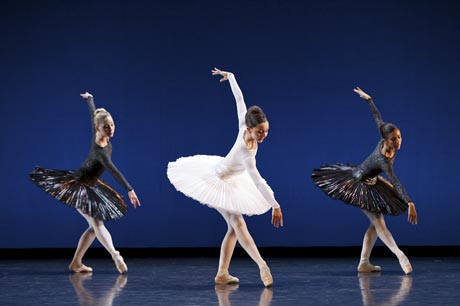
© Andrew Ross. (Click image for larger version)
Artists Links
kennethmacmillan.com, christopherhampson.com, scottishballet.co.uk
Review Links
Mary Brennan, Herald, Kelly Apter, Scotsman, Mark Monahan, Telegraph, Donald Hutera, Times, Lucy Ribchester, Vivien Devlin, Edinburgh Guide
It was the end of day 1 – I’d seen 10 pieces spread over 3 bills, 2 films and also attended 2 talks and discussions, all washed down with gallons of coffee. I went to bed thanking my lucky stars that the following days would be a little less full on!
Day 2
Films – Portrait of Mary Wigman
and The Green Table
I have to confess Mary Wigman and German modern dance hasn’t been something I’ve greatly been drawn to or researched particularly. Graham Watts did an excellent piece on Wigman, and her descendants, based around reviewing a DVD (German Lineage in Modern Dance) and, for me, the film screening seemed like a good way to directly see the movement and how it might relate to all the contemporary work being presented.
Some ‘old’ dance wears well and some less so. Looking at the flickering images of Mary Wigman, usually dancing in her own solo works, you think it more the latter than the former. Everything seems free and about emotion. Rather uncharitable, but it took me back to primary school and a large class of us in the assembly hall listening to Music and Movement on the radio in which the announcer was always instructing us to find some free space and pretend to be a tree, a growing tree… we’d all start small, rise slowly from the floor and end up with arms shooting out and blowing in the wind all over the place. Although Wigman was dealing with big issues/stories and passionately believed that dance was the most vivid expression of life, there was a lot of that naive quality as we now look back. For a more rounded assessment of Wigman see this piece by Judith Mackrell.

© Moderne-Dans.
Portrait of Mary Wigman is essentially a documentary about her life, from cradle to grave, and clearly shows just how well-known she was in Germany and on tours to the USA. But a few works aside, she seems more renowned for running and inspiring schools and passing on her expressionist and questing ways. One link to today was to come on the last day of Dance Odysseys with Cesc Galabert dancing Gerhart Bohner’s Im (Goldenen) Schnitt I – Bohner trained with Wigman and it did make me interested in seeing how this different strand of work matured.
Kurt Jooss, like Wigman, also studied with Rudolf von Laban and his strand of dance was shown in the second film: The Green Table. Premiered in 1932 it’s a well-known piece, still regularly performed today, but here danced by Jooss’s own Folkwang Ballet company and starring a young Pina Bausch. Directed for the BBC by the great Peter Wright, best known as Director Laureate of Birmingham Royal Ballet but, more pertinent here, a former dancer with Jooss. Although Wright wasn’t in Edinburgh Bob Lockyer, the former BBC dance supremo, was up to see Dance Odysseys as well and he was a BBC trainee when The Green Table was filmed. I can never think of the film without thinking of Anthony Crickmay’s famous picture of Bob cleaning Death’s shoes – one of those delightful dance images…
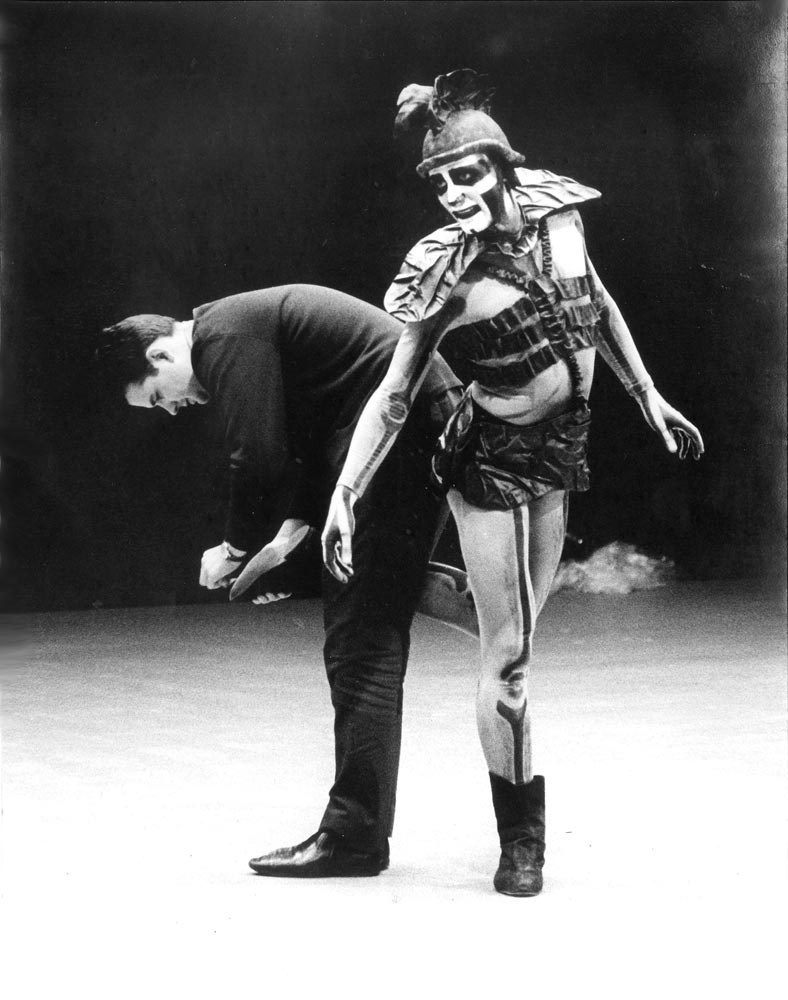
Picture kindly supplied by the Place for our coverage of Bob Lockyer’s 70th Birthday Celebrations at the Place on 13 April 2012.
The Green Table was recorded in an all-white studio that seems to have no walls or boundaries. It’s a ghostly ‘anywhere’ for a piece that generically rails against politicians and what seems the inevitability of war and its wretched consequences – death is everywhere and the work is actually subtitled “A dance of death in eight scenes”.
Joffrey Ballet in The Green Table – Prologue.
I’ve never seen the film in its entirety before and it’s a real treat, with expressionism at the service of clear meaning. The steps aren’t clever but robust and appropriate – the politicians thump the table and pose, the soldiers march and really fight, the Partisans move stealthily, and in the brothel there is social dance etc. And floating all around is Death in the scary designs of Hein Heckroth and often seen close to, the camera moving and presenting its own dynamic. I wish this recording was freely available – the performance seems to make more of the piece then I’ve sometimes seen live. One thing’s for sure, whether seen live or as a recording the subject matter never goes away.
Wikipedia Links
Mary Wigman, Kurt Jooss, The Green Table
Refreshments and the Programme
Whenever there was time between events people would often descend to the ground floor bar/cafe at the Festival Theatre. It’s a comfortable place but they could easily get swamped and service take an age (and longer even). I quickly discovered Babelon just across the road. Not a posh place but fast service and with all-day breakfasts and a mug of tea for £4.50, great value. It also came free with a bunch of very real Edinburgh folk, most of whom were not preoccupied with the high arts. Alan Bennett and Christopher Bruce would like it here, I thought.
The Dance Odysseys programme, produced by EIF rather than Scottish Ballet, was a source of interest and annoyance – it didn’t really have enough information in – particularly about all the dance works being performed. The useful reads were by Mary Brennan, talking about the Scottish Ballet history and very much about Peter Darrell’s vision, and a good extended interview with Christopher Hampson by Graham Watts. This also gave thumbnail sketches of the 5 major headline works, and thank goodness because there was little else on them. Where you might expect to have solid words about the background to ballets there was instead a lengthy piece about the music of each of the 5 pieces. For a dance audience it seamed very wrong priorities. I also missed anything from the choreographers involved in the New Voices, Contemporary Classics and Duets bills, or about Scottish Dance Theatre’s SisGO. I admit Dance Odysseys is a huge undertaking and doing any programme for it would be tough, but a ton of musical detail and little about the dance itself is a fail, really.
Duets bill
After sampling the diverse joys of German expressionism and Babelon, the Duets bill brought me back to ballet with a pleasant bump and this was probably the most easily enjoyed bill in the studio theatre set-up.
Trailer for the Scottish Ballet Duets bill – it shows the pieces being set in the studio and some words from the choreographers and Christopher Hampson
Duets included 2 short pieces by company founder Peter Darrell. A contemporary of Kenneth MacMillan and John Cranko he, like them, was an accomplished choreographer and Jann Parry recently did a long feature for DanceTabs about his life and achievements, linking in with a BBC documentary and the Peter Darrell Trust holding a party to celebrate the man 25 years after his death. The two pieces put on by the company should be seen as a down payment with more Darrell work of greater significance to come. He was a choreographer of consequence and right the company celebrates its heritage.

© Andrew Ross. (Click image for larger version)
For the BBC documentary an extract from Darrell’s Cheri was restaged and that opened the Duets bill. Based on Colette’s novel of the love between a young man and much older woman, this is but a short fragment. Too short, really, but strongly danced by Luciana Ravizzi and Owen Thorne. What it does is confirm Darrell up there with MacMillan in putting revealing and deeply-moving pdd together, and you yearn to see the fuller picture really, the more so knowing the complete work premiered at the Festival itself, some 30 years ago.
Longer, and the more satisfying for it, was Darrell’s Five Ruckert Songs. Bethany Kingsley-Garner has a triumph in the expressive lead. The long flowing costumes (by Darrell himself) might look a little dated but they flow with the deep romanticism of Mahler’s music just as surely as Mahler flowed and found his own resonance with Friedrich Ruckert’s poems. (listen to an excerpt on YouTube)

© Andrew Ross. (Click image for larger version)
If Darrell represented where Scottish Ballet started, then Sophie Laplane‘s duet, Oxymore, shows the cutting edge of a new generation within the company. Laplane is a Coryphee and, on the strength of a solo she did in the private Scottish Ballet choreographic workshops, Hampson encouraged and challenged her to do more with two dancers. The “Challenge” word came up a number of times in discussions with Hampson – choreographers being pushed outside the box with fresh, but constrained, challenges and not thinking one needed huge budgets and endless time to be creative.

© Andrew Ross. (Click image for larger version)
Oxymore is pure 21st century dance – sadly no video of the piece but you can hear the music on YouTube. Electronic, repetitive, catchy are the sounds and so is the dance – dance of 4AM Ibiza rather than ballet or contemporary movement – it makes Wayne McGregor feel so old hat! Brenda Lee Grech and Daniel Davidson delivered the slowly evolving repetition with deadpan hypnotic accuracy. A chic 6-minute piece and where Laplane goes from here should be interesting.
Helen Pickett‘s second piece in Dance Odysseys was a duet from Trace to a Sergei Rachmaninov piano prelude. Like the first piece, Trace was inspired by a play – in this case Tennessee Williams’ surreal Camino Real. ‘Our’ duet, shorn of any real meaning or context, seemed to play neatly with love, the Rachmaninov gently wafting thoughts of togetherness (listen to it here and more information), but dance-wise they are poles apart in understanding each other – more Venus and Mars metaphors. Like Cheri you wanted to see the complete work (and have sensible background notes in the programme).
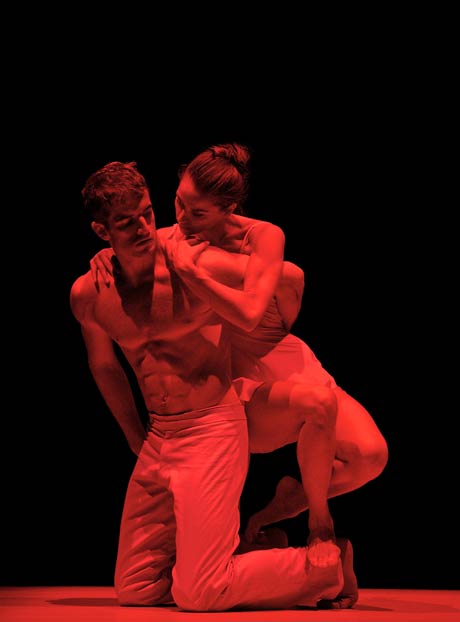
© Andrew Ross. (Click image for larger version)
Like Pickett, James Cousins also had a second piece danced by Scottish Ballet – his Jealousy duet. I’ve seen this piece a few times now, including its Print Room premiere), where 4 choreographers contributed to the night overall. The Cousins section always sticks in the mind for its beautiful constrained cleverness as Lewis Landini manipulates and supports Brenda Lee Grech, never allowing her to touch the floor and never straying away from a tight column of red downlight. It’s not smutty but you do feel you are intruding on something, some elaborate controlled and controlling relationship. I hope Scottish Ballet keep this in the rep – it would be a great, and different, Gala piece.
Artists Links
peterdarrell.org, jamescousinscompany.com, Sophie Laplane on scottishballet.co.uk, helenpickett.com, scottishballet.co.uk
Review Links
Mary Brennan, Herald, Kelly Apter, Scotsman, Donald Hutera, Times, Gerald Dowler, FT, Lucy Ribchester, The List, Vivien Devlin, Edinburgh Guide
James Cousins There We Have Been
at Zoo Southside
James Cousins was also on the Fringe with his own company in There we Have been – a close relative of Jealousy. They were performing this duet at Zoo Southside, an intimate space only 5 minutes down the road from the Festival Theatre. The only problem with seeing it was its start time – 10:30AM – which seems too early for such a powerful piece. It’s a relative of Jealousy because it again relies on a female dancer never touching the floor. But whereas Jealousy is 5 mins, There we Have Been is well over 15 minutes. It also perhaps has more of a plot – it’s based on Haruki Murakam’s novel Norwegian Wood and concentrates on the relationship between a man and the former girlfriend of his best friend – a friend who had committed suicide. Thus the girl is given constant support and they comfort one another. But as it goes on you see flickers of love and eroticism as she winds around him ever more intimately. The score, by Seymour Milton, is (for the most part) sparse, icy piano and that suits the standing and deliberate nature of much of the movement.
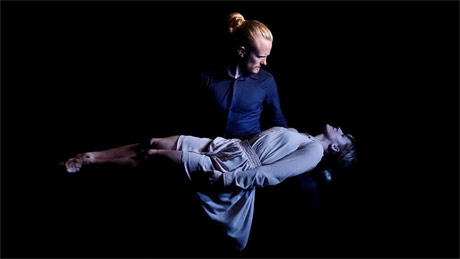
© David Foulkes. (Click image for larger version)
Aaron Vickers and Lisa Welham are magnificent in the leads, and Vickers I note was in at the start with Cousins, dancing the lead in Jealousy at The Print Room. Cousins’ style rather reminds me of where Kenneth MacMillan might be if he were born again. Cousins is contemporary, but his work seems to have a balletic eye for beauty and the flow of bodies. All his work looks meticulously honed, too. He will be big.
There We Have Been – Sadler’s Wells promo video from James Cousins on Vimeo.
Artists Links
jamescousinscompany.com, Wikipedia on Haruki Murakam’s novel Norwegian Wood
Review Links
Zoe Anderson, Independent, Mary Brennan, Herald
Pierrot Lunaire
Sadly I just can’t take the music (Schoenberg) of Glen Tetley‘s Pierrot Lunaire, and a clash with seeing Rosie Kay on the Fringe had me chose the latter. But it was with a clear conscience because Kathy Elgin, at very short notice, agreed to cover the Tetley for us. You can see her separate review, complete with heartfelt advice to a ‘friend’ on why he (OK me) should see it!
Review: Scottish Ballet – Pierrot Lunaire (part of Dance Odysseys)
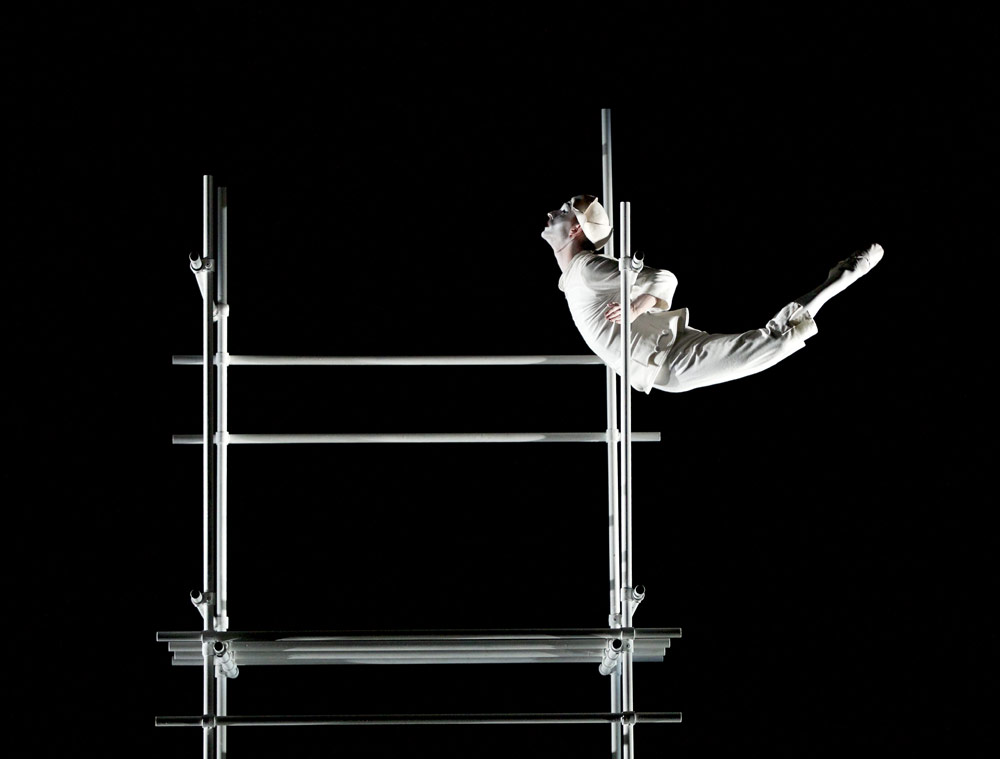
© Andrew Ross. (Click image for larger version)
Review Links
Mary Brennan, Herald, Kelly Apter, Scotsman, Gerald Dowler, FT
Rosie Kay, Guilherme Miotto and Louis Price – Sluts of Possession
This 40-minute piece was on at Dance Base. I just loved their small tropical-themed bar you could hang out in before a show. I’ve really enjoyed Rosie Kay’s last 2 shows (5 Soldiers and There is Hope) but this was an opportunity to see her dance in her work, with Guilherme Miotto, in a piece that promised to “…grab you by the hand and thrust you deep into a primitive and possessed state.” Sadly nothing much happened for me at all. I did rather like the projections by Louis Price, which led the piece and left the dance looking rather humdrum and improvised.
SLUTS OF POSSESSION NEW TEASER!!! from Louis Price on Vimeo.
The visuals were projected on part of the wall at the back of the stage, where everybody could see them, and also onto what seemed an irregular tinfoil bed, which was harder to see but looked visually arresting. We got quirky cartoon images of stick insects or simple scratchings but that changed over time to flickering old ethnological films of ceremonies in what looked like Tibet. I found this old footage involving and it did make me think of just how many different ways man has developed spiritually. But possessed I wasn’t. However I look forward to Rosie Kay’s next venture and will keep an eye out for Louis Price in future, as well.
There is a great blog on the background to this work.
Artists Links
rosiekay.co.uk, Guilherme Miotto on bodiesanonymous.nl, louisprice.co.uk
Review Links
Mary Brennan, Herald, Kelly Apter, Scotsman, Judith Mackrell, Guardian, Donald Hutera, The List, Stephanie Green, Skinny
Day 3
18 August 2013: During the day there were a couple of talks / discussions which I mention as part of the relevant review. The main stage evening performance was…
Rite of Spring
Originally created for Atlanta Ballet 3 years ago, this was the UK premiere. There are a lot of expectations around Rite – not least for choreographers. At the talk Hampson mentioned that for most choreographers there was this “will they or won’t they do ‘Rite'” feeling. He always felt he would but had no preconceived ideas on what he would do with the monumental score. Candidly he added that having created his Rite he felt unexpected relief that it was done and out of the way, though he’d never thought of it being any kind of weight at all.
Hampson’s Rite of Spring is contemporary, but the issues it shows – of religion, war and savage inhumanity – are generic, just as they are in The Green Table. In Hampson’s version the paganism has morphed to a mix of politics and religion and you see the confrontations of Iraq, Afghanistan and Guantanamo Bay all over it. But that’s what we see today – it’s a Rite devoid of time and place with an all-white enveloping set and black and white costumes – there is no identifying fashion here.

© Andrew Ross. (Click image for larger version)
As Rite‘s go the big surprise is that Hampson’s is for 3 dancers – Younger Brother, Older Brother and a Faith/Death character. It’s split into 2 parts. Part one starts with brothers being brothers – playing, fighting a bit; the older is more dominating, but that’s life. Faith enters, dressed in white against their black. She circles above on the walls that surround them and each of them dances with her – fascinated by her beauty and distant detached air. The young brother swears ‘blind’ obedience.
In part 2 the brothers’ life journeys have taken them to very different worlds: the younger incarcerated and the elder in military fatigues, the jailer. The younger is stripped and increasingly violently abused and for solace looks to the Faith character now returned and dressed in black. But her interaction seems as detached as ever and the Younger Brother goes the way of all Chosen Ones in Rite of Spring.

© Andrew Ross. (Click image for larger version)
That straightforward telling doesn’t at all relate to the visceral intensity of the work and the stunning performances given by Luciana Ravizzi, Constant Vigier (younger brother) and Christopher Harrison (the older). The second part particularly is painfully gripping and the end both inevitable and unexpected. This is intelligent stuff, but the movement and gestures are easily read and, while the conclusions we each draw might be a little different, it is dance that makes you think and there is so little of that around. I’d love to see it again when the cast have even more performances under their belts and it’s in the Scottish Ballet Autumn repertoire along with Elite Syncopations which nicely shows the flip side of mankind, with its sense of dizzy fun and community.
Artists Links
christopherhampson.com, scottishballet.co.uk
Review Links
Mary Brennan, Herald, Kelly Apter, Scotsman, Zoe Anderson, Independent, Donald Hutera, Times, Gerald Dowler, FT, Lucy Ribchester, The List, Justine Blundell, Edinburgh Guide
After Rite there was just time for a quick beer before bumping into Jane Pritchard and going off clubbing together…
Scottish Dance Theatre – SisGo
I just loved the blurb for this:
“SisGo’s territory is minds, organs, nervous systems. Join an intimate journey into the night. Fleur Darkin merges this company of powerful dancers with the audience to create a riot of choreography. Experience new proximities to the performers in this futuristic love letter to Rudolf Laban.”
After Rite of Spring the Festival Theatre was reconfigured to its on stage studio set-up and at 09:30 we arrived in the main auditorium for what had became the usual ritual of waiting to be guided through the pass door into the working side of the theatre, entering the stage area by the wings. But this was rather different – we had to remove our shoes, don white socks and leave all our bags behind. I have to say that Jane Pritchard and I didn’t look like most of the young things come to sample Plastikman, Four Tet and Mortitz von Oswald…
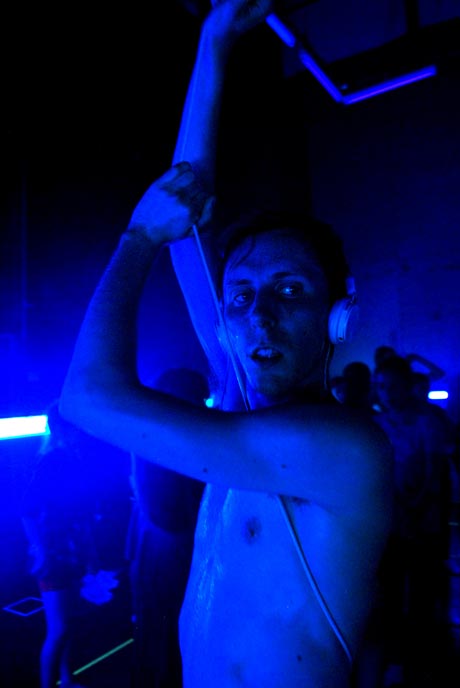
© Vicky Wilson. (Click image for larger version)
Ushered through to the back, we found ourselves all on stage with a few dancers, all of us cordoned off from escape and with a barrage of lurid fluorescent lights at high and low level. At first we wander around in half light, edging towards where we think there is dance action – the dancers work singly or in pairs erupting into expansive floor-devouring movement for a minute or two before evaporating away. There is a lot of anarchy, dancers barge into you, herd you with oversize corded headphones; marks on the floor appear and you all form a contemporary conga for a time, while dancers do solos between the rows. You also become aware that some dancers (students I think) are dressed ordinarily – wonderfully confusing as movement erupts all over. Did I go into a trance – no! Did I feel all silly and embarrassed – no! It’s a piece for everybody – no audience participation as such and not just for youngsters. I was so glad I went to what was a very different contemporary experience. The 4 days were very much about putting people physically closer to dancers and this did that to the max.
Artists Links
Fleur Darkin on SDT, www.scottishdancetheatre.com
Review Links
Zoe Anderson, Independent, Donald Hutera, Times, Susannah Radford, The Skinny, Devawn Wilkinson, A Younger Theatre
Day 4
Last day (19 August 2013) and an odd mix of highs and lows. It started at 10:30 with James Cousins’ show on the Fringe, which I’ve already covered (but happy, happy). On recommendation I then went to see the Mary, Queen of Scots exhibition at the immaculately-refurbished National Museum of Scotland. A good way to spend time, I thought, and a reminder of how hair-raising politics was in the past. There was time to see the New Voices bill again – it was actually the final show of Scottish Ballet’s contribution to Dance Odysseys. As the dancers left Hampson was at the last of the 8 talks, this time with Fleur Darkin, to reflect on it all with Mary Brennan.
Cesc Galabert – Im (Goldenen) Schnitt I
The very last performance of Dance Odysseys was by Cesc Gelabert (from Gelabert Azzopardi Companyia de Dansa) of Gerhart Bohner’s Im (Goldenen) Schnitt I to Bach’s The Well-Tempered Clavier. There had been a talk the proceeding day with Gelabert and Vera Rohm, the sculptress whose designs are used. It’s a challenging, unexpected piece, and while it didn’t sing to me like SisGo, it broadened the event and was there because Jonathan Mills as overall director wanted it.
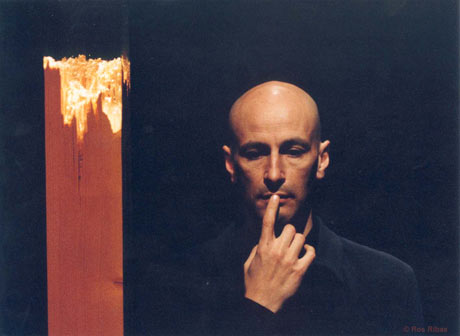
© Ros Ribas. (Click image for larger version)
Bohner’s piece is not dance as many would class it – it’s free movement and very un-artful at first sight. But it’s all very highly structured from the music, through the geometric designs, consisting of 8 very narrow glass and wood columns meticulously laid out at different spacings across the front of the stage (and one mysteriously behind), to the movement that explores the space and then concentrates and isolates individual parts of the body. It starts at the head and ends with the feet a not inconsiderable time later. “This is a hard piece” Gelabert said at the start of the discussion and boy he wasn’t kidding. Interesting, too, to hear him put his mentor in perspective, classifying Pina Bausch as easy in her loving approach to dance whereas Bohner is “radical, abstract and more difficult”.

© Ros Ribas. (Click image for larger version)
The star of the show itself is undoubtedly Gelabert – he moves with beautiful grace. And because it’s not obviously dance movement you wish you could have that incredible grace for yourself as you go about your business each day. While I’m envious of that it is a very repetitive piece (“Easy to get lost” he confided) and some people voted with their feet and left. But the show garnered 4-star reviews from some critics. In my ideal world I’d have hoped for something more likable to close the 4 days. But that’s challenges for you and where we came in.
Artists Links
Gerhard Bohner on Wikipedia, gelabertazzopardi.com
Review Links
Mary Brennan, Herald, Kelly Apter, Scotsman, Lucy Ribchester, The List
Wrap-up
In the final summing up it was clear that both Hampson and Darkin were pleased with the way the chamber and studio approach had worked out – that and also that the diversity of dance today was on show rather than dance divisions like ballet and contemporary. It’s all *Dance*. Hampson related a story that rather summed up the success for dance. Jonathan Mills, the overall EIF director, unexpectedly rocked up at mid-day on Sunday. Hampson was worried – the Scottish Ballet Duets show was totally sold out – where would they fit him in? No problem as it turned out – he wasn’t staying but just putting his head around the door to see if there really was an audience for ‘ballet’ on Sunday lunchtime or not? Well there was and for different work too.
There is one headline that captures much as well:
“Scottish Ballet takes foremost award for sustained brilliance“
Keith Bruce in The Herald on Scottish Ballet winning an Archangel Award for sustained contribution to the Edinburgh Festivals.
So proud of all @scottishballet for winning this Archangel Award for our #DanceOdysseys @edintfest pic.twitter.com/h9w6vK1tzg
— Christopher Hampson (@HampsonChris) August 24, 2013
So what are my feelings looking back on the 4 days and £500 spent on total dance immersion? Well what I liked most was that this was all new or very rarely seen work – it wasn’t another round of Swan Lake or Romeo and Juliet or pas de deux stripped from them. The work and the films were unashamedly about contemporary movement and the audience was there and excited. I didn’t like everything but from start to finish I liked the idea and presentation 110%. Dance needs its blockbusters, but it needs more amazing trailblazing events like this, too – well done all in Scotland I say. Very well done indeed.













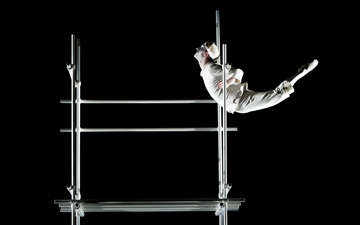
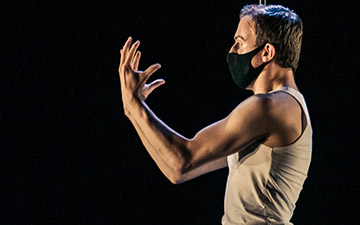

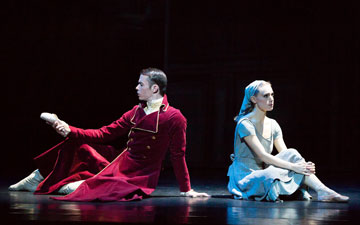
Bruce: Huge congratulations on this Magnum Opus! The work involved in its compilation must have been very considerable, possibly with lessons for the editors of the official Festival programme for the events, by the sound of things. A notable example of what can now be done online if time and care is taken to generate a worthwhile product.
And the Google Earth insets take me well down Memory Lane. Edinburgh University’s Old College and its large dome are just a block or so further into town from the Festival Theatre, and I used to get the bus home from a stop pretty close to where your Babelon Cafe now sits.
Well done and it sounds as if you thoroughly enjoyed the trip.
Ian.
Thank you Ian – appreciated. I think it’s a good record/resource page of a fantastic event… but I’ll never do another like it! The approach seemed like a wonderful idea but it’s a lot of work – much more then I thought when I started off. I was pleased to find some of the videos – particularly Sabine Kupferberg in Jiri Kylian’s Silent Cries – gorgeous.
Was not sure about the maps – take a while to load up. But at least you know where Babelon is now!